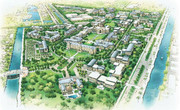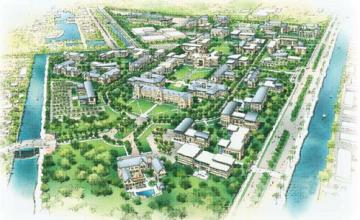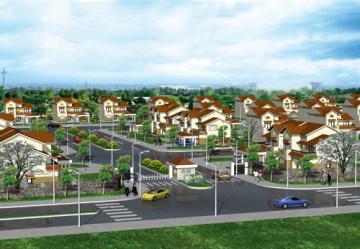University of Southeast Asia is born

The creation of the University of Southeast Asia began with a simple question on the lips of a Vietnamese mother: “Where will my daughters go to college?”
Vietnam currently has a high literacy rate, and its educational system has undergone a series of reforms in recent years as the country prepares its workforce for twentyfirst century global opportunities and demands. Featuring a highly literate population with a median age of 29 years, an emerging middle class and varied physical resources, Vietnam is poised for increasing affluence and global influence.
For most Vietnamese parents, the question about their children’s higher education is limited to three answers:
(a) a technical or vocational school;
(b) public university;
(c) send them overseas.
Yen Dang, a successful Vietnamese international business woman and chairwoman for the ITA Group, looked at all these options, and though she ultimately chose western universities for her daughters, from that decision was born a personal commitment to build a new university to provide opportunity a world class education for the Vietnamese people that she could not find there for her daughters.
After 8 years that dream - the University of Southeast Asia (UOSA) - is about to be under construction in the new town of ECity in Long An Province, just outside Ho Ch Minh City.
| Perspective of the University for Southeast Asia in Ita ECity Vietnam (Photo: Ita Group) |
“It’s an extraordinary opportunity to be able to contribute to such a noble and challenging vision,” says Andy MacPhillimy, AIA, LEED AP, of Morris Architects in Houston, Texas. “The Vietnamese people are gracious, intelligent and industrious and are eager for the best knowledge and training to help them compete on the world stage. We are honored and excited to partner with Chairwoman Dang to design Vietnam’s first western style university environment.”
The goal of the school is at once sweeping and specific. “The University of Southeast Asia,” says founder Yen Dang, “will be renowned worldwide for its teaching, research, and service. This top-tier private university will provide need educational opportunities, spur Vietnam’s economic growth and be recognized as a desirable destination for any student around the world.”
The country
Vietnam is rapidly becoming a major player in the global economy, as demonstrated most recently with its entry in the World Trade Organization (WTO) in 2007, and taking a seat on the United Nations Security Council in 2008.
Currently, Vietnam remains a potent mix of urban and rural, with infrastructure playing “catch-up” with its growth. Jim Pope, of Morris Architects, captures part of the experience. “In Southeast Asia,” says Pope, “you can fly into one of the most modern airports in the world and immediately find yourself in the only car on a highway, surrounded by thousands of motorcycles and bicycles. All the infrastructure of the modern world – mass transit, roads, utilities, etc. – is in Vietnam, but doesn’t reach all throughout Vietnam.”
Ita ECity
Near Ho Chi Minh City on open farmland, a new town with all the modern amenities is being created by the Vietnamese company ITA Group. Being a leader in developing industrial parks for national and international companies, the ITA Group recognized that to attract and service new clients could be best done by providing them with a new modern city with all the modern amenities. The master plan includes including housing, retail and commercial facilities, and schools built with amenities such as broad avenues, landscaping and water features. Recognizing the diversity of need, housing options are available for general staff, administrators and executives. To insure that there are plenty of trained workers, ITA Group constructed a vocational school to provide initial and ongoing training for the industrial park clients.
| The area of villas in Ita Ecity Vietnam (photo: Ita Group) |
For the ITA Group to make this a success their planning and the scope of the construction effort extended far beyond the borders of ECity, and includes the development of a power generation plant and a Tollroad to provide convenient access to Ho Chi Minh City and its airport.
Over 200 hectares were set aside at the center of the planned new town for special development. In early 2007 Morris Architects began working with Chairwoman Dang to develop a master plan document to create the University of her Dreams. With development planned in three major building phases, the university expects to host 5,000 students in Phase I, growing to 25,000 students by 2025. The university will offer a full range of study and include multiple degree programs ranging from liberal arts, to business, science and engineering, law, dentistry and others. Ultimately the university will grow its graduate and research programs to compete at an international level.
The design of the university is based on both western planning concepts and a traditional architectural style emoting a sense of academic tradition, permanence and prestige.
Mrs. Dang explained that “a top-tier research affiliated university reaps ever-increasing benefits for its people and country.” In addition, she added, “we plan on strengthening the University of Southeast Asia by creating a healthcare and technical infrastructure around it. Not only will Long An Province have this new campus of colleges, it will have hospitals, housing for students and teachers, and a tremendous growth in opportunities.”
The ITA Group has asked Morris Architects to assist creating a master plan for the remaining 100 hectares. At its heart will be a 200 hectare lake to act as an amenity for the entire tract and will include major commercial, retail, restaurant and entertainment facilities. Under consideration are special facilities for a media company and a medical campus. Jim Pope and Todd McCurdy of Morris’s Orlando office bring broad experience working in international markets to the master planning work, eliciting elements of the local culture to inform the design.
Once complete, ECity will be a diverse thriving community representing modern Vietnam, and contain all the major elements of a much larger city including residential, commercial, institutional, cultural and recreational – a hallmark of the future of Vietnam.
Published news
- Press release: The ground breaking Ceremony of building the Rach Gia Sea Encroachment Urban Zone in Kien Giang province
- Singapore Investment Corporation seeks investment opportunities in Tan Tao Group
- Tan Tao Group's 2008 General Shareholders Meeting a Success
- Thousands of workers flock to the Tan Tao music night
- Tan Tao Group receives the 2007 Business Superstar Award
- Tan Tao to celebrate National Unification Day and International Labor Day
- Promoting economic potential, investment cooperation and tourism in Long An
- Cooperation amid top corporations
- ITA Group project in Long An province
- The largest private power plant in Vietnam attracts the attention of the World's media


